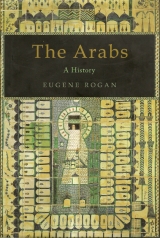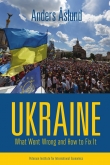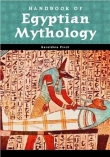
Текст книги "The Arabs: A History"
Автор книги: Eugene Rogan
Жанры:
Военная история
,сообщить о нарушении
Текущая страница: 34 (всего у книги 47 страниц)
In January 1977, Sadat was giving an interview to a Lebanese journalist in his vacation home in the town of Aswan on the upper Nile. The journalist broke off her questioning as a column of thick smoke rose from the center of the town. “Mr. President,” she said, “something strange is happening behind you.” Sadat turned and saw fires in Aswan and a mob crossing the bridge over the Nile toward his house. Sadat had just ordered the cash-strapped Egyptian government to lift a number of І crucial subsidies on bread and other staples. Egypt’s poor saw their subsistence placed in jeopardy and rose in nationwide bread riots that left 171 dead and hundreds injured before the subsidies, and calm, were restored.51 Something strange indeed was happening behind Sadat. The Egyptian public, who once hailed him as the “Hero of the Crossing” for Egypt’s successes on the Suez Canal in the October War, were losing confidence in their president. Sadat did not have Nasser’s charisma or mass appeal. He needed to deliver on his promises of prosperity or face deposal. Sadat grew increasingly convinced that prosperity could only be achieved through American support?and peace with Israel. In the immediate aftermath of the 1973 War, Sadat had leveraged Egypt’s credible military performance and the successful deployment of the Arab oil weapon to secure U.S. support for a partial Israeli withdrawal from the Sinai. U.S. Secretary of State Henry Kissinger initiated his signature shuttle diplomacy, making frequent negotiating trips between Cairo and Jerusalem to secure the two Sinai Disengagement Accords (January 1974 and September 1975) that restored both the Suez Canal and some of the Sinai oil fields to Egypt. The recovery of the Suez Canal was a major accomplishment for Sadat, first because he had succeeded where Nasser had failed—in ensuring the canal did not become the de facto boundary between Egypt and Israel—and second, because the canal was a major revenue source for cash-strapped Egypt. With American assistance, the Egyptians cleared the wrecks of ships destroyed in the course of the Arab-Israeli War of 1967 from the canal, and on June 5, 1975, Sadat reopened the strategic waterway to international shipping. The first ships to exit the canal were some of the fourteen vessels of the “Yellow Fleet,” a group of international steamers trapped in the Great Bitter Lakes by the 1967 War that had spent eight years gathering the yellow dust for which the fleet was named. Though Egypt celebrated these gains, the Sinai Accords left Israel in control of most of the Sinai Peninsula (Egyptian territory occupied by Israel in the Six Day War) and the Egyptian treasury still struggling to make ends meet. Sadat was growing increasingly desperate for new funds for his treasury, and he revealed a willingness to turn against his Arab neighbors to reinforce his own position. In his desperation to increase Egypt’s revenues, in the summer of 1977 Sadat attempted to seize oil fields belonging to Libya. According to contemporary estimates, Libya generated some $5 billion in oil revenues each year, a vast sum for a population that was a fraction the size of Egypt’s—protected by an army that was also a fraction the size of Egypt’s. In a moment of mad opportunism, Sadat considered the Soviet arms deliveries to his wealthy neighbor a pretext to invade—as though the Libyan arsenal represented a threat to Egypt’s security. Sadat withdrew his forces on the Israeli front in the Sinai to attack the Libyans in the Western Desert on July 16. The Egyptian air force bombed Libyan bases and provided air cover for the invasion of Libya. “Almost immediately it became clear that Sadat had miscalculated,” veteran analyst Mohamed Heikal recalled. “Neither the [Egyptian] public nor the army saw any logic in disengaging forces with an enemy, Israel, only to attack an Arab neighbour.” The Egyptian attack on Libya went on for nine days. Egyptian public was unenthusiastic, and Washington was openly hostile to Egypt’s unprovoked aggression. The U.S. ambassador in Cairo made clear Washington?s opposition to any invasion of Libya, and Sadat was forced to back down. On July 25, Egyptian troops withdrew from Libya, bringing the conflict to an end. ?Thus it was,? Heikal concluded, ?that the food riots in January and a botched foreign adventure . . . led Sadat to the conclusion by mid-1977 that Egypt would have to negotiate a new relationship with Israel.? 52 If Sadat failed to increase his revenues, he would face further food riots. He could not secure the funding from his Arab brethren—by persuasion or coercion. Yet by being the first Arab state to conclude peace with Israel, Egypt could attract substantial U.S. development aid and foreign investment. It was a high-risk strategy, given Arab intransigence toward Israel. Yet Sadat had taken high risks before and succeeded. The obstacles to peace with Israel had never appeared higher. In May 1977, Menachem Begin led the right-wing Likud Party to victory, shattering the Labour Party’s monopoly of government since the founding of the state of Israel. Under Begin’s leadership, the Likud Party was committed to establishing Jewish settlements to retain the Arab territories Israel occupied in the June 1967 War. It would be hard to imagine a more intransigent negotiating partner than the ex-terrorist proponent of Greater Israel. And yet it was Begin who made the first contact, sending conciliatory messages to the Egyptian president through King Hassan II of Morocco and Romanian president Nicolae Ceausescu. The latter persuaded Sadat that “a peace treaty would have been impossible with Labour in power and Begin in opposition, but with the roles reversed the prospects were better,” for the Labour Party was less likely to stand in the way of a peace deal with Egypt.53 Sadat returned to Egypt and began to contemplate the unthinkable: direct negotiations with the Israelis to secure an Arab-Israeli peace treaty. He had demonstrated Egypt’s military leadership in the October War and would secure Egypt’s leadership over the Arab world by leading the peace. Just as his generals had been resistant to making war with Israel when he first broached the subject in 1972, so he knew his politicians would resist his peace plans. He would need to reshuffle his political team and bring in some new talent less resistant to change. He chose a complete outsider to help plan his peace campaign.
Boutros Boutros-Ghali (b. 1922) was a professor of political science at Cairo University. His grandfather had served as prime minister and his uncle as foreign minister under Egypt’s monarchy. Members of the landed aristocracy, the Boutros-Ghali family saw their agricultural estates confiscated by the new government’s land reform measures following the 1952 revolution. In a country that was overwhelmingly Muslim, Boutros-Ghali was a Coptic Christian and his wife a member of a prominent Egyptian Jewish family. Yet these very qualities, which had marginalized Boutros-Ghali from Egyptian politics since the 1952 revolution, now recommended him for government service when Sadat decided to attempt a peace settlement with Israel. On October 25, 1977, the professor who would later become secretary-general of the United Nations was astonished to learn that he had been appointed minister of state in a cabinet reshuffle. Shortly after entering government, Boutros-Ghali attended Sadat’s November 9 speech to the People’s Assembly, in which the president first intimated his willingness to work with Israel. “I am ready to travel to the ends of the earth if this will in any way protect an Egyptian boy, soldier, or officer from being killed or wounded,” Sadat told the legislators. Speaking of the Israelis, he continued: “I am ready to go to their country, even to the Knesset itself and talk with them.” Boutros-Ghali recalled that PLO chairman Yasir Arafat, who attended the session to hear Sadat’s speech, “was the first to burst into applause at these words. Neither Arafat nor my colleagues nor I understood the implications of what the president had said.” None of them had a clue that Sadat actually contemplated imminent travel to Israel.54 But one week later, Boutros-Ghali understood the full significance of Sadat’s words, when the then vice president Hosni Mubarak asked him to draft the outline of a speech “that the president will give next Sunday—in Israel!” Boutros-Ghali was excited to find himself “at the heart of this historic event.” As Sadat expected, many of his politicians rejected his plans. Foreign Minister Ismail Fahmi and Muhammad Riyad, the minister of state for foreign affairs, both resigned rather than accompany Sadat to Jerusalem. Two days before Sadat was scheduled to depart, Boutros-Ghali was appointed acting foreign minister and invited to join the presidential delegation to Jerusalem. His friends warned him not to go. “The fear in the air was palpable,” Boutros-Ghali recalled. “The Arab press was vicious. No Muslim, they wrote, would agree to accompany Sadat, so he chose the Christian Boutros-Ghali, who has a Jewish wife.”55 Yet the new acting foreign minister found himself “attracted by the extraordinary challenge” of shattering the taboos set out in the 1967 Khartoum Summit, which had bound all Arab states to a common position of no recognition of the Jewish state, no negotiation with Israeli officials, and no peace between Arab states and Israel. The Egyptian president annoyed his fellow Arab heads of state by announcing his plans and only then seeking their support for his initiative. Eager to avoid a break with Syria, Sadat flew to Damascus to brief President Hafiz al-Asad on his plans to visit Israel. Al-Asad was quick to remind Sadat of the common Arab position. “Brother Anwar, you are always in a hurry,” Asad told him. “I understand your impatience, but please understand that you cannot go to Jerusalem. This is treason,” he warned. “The Egyptian people will not take it. The Arab nation will never forgive you.”56 Yet Sadat was not to be deterred, and on November 19, with Boutros-Ghali in tow, he boarded a government plane for the forty-five-minute flight to Tel Aviv. “I had not realized the distance was so short!” Boutros-Ghali exclaimed. “Israel seemed as strange to me as a land in outer space.”57 After so many years of war and enmity, it was as though the Egyptian people were looking at Israel as a real country for the first time. They had very mixed feelings. Veteran Egyptian journalist Mohamed Heikal captured the moment as Sadat emerged from his airplane at Lod Airport: ?As television cameras followed him down the steps the guilt felt by millions of Egyptians was replaced by a sense of participation. Right or wrong, Sadat?s political and physical courage was beyond dispute. His arrival on forbidden territory enthralled many Egyptians and appalled the rest of the Arab world.?58 The following day, Sunday, November 20, 1977, Egypt’s President Anwar Sadat addressed the Israeli Knesset in Arabic (much to Boutros-Ghali’s chagrin, the English text on which he had worked so long was not used). This was exactly the bold gesture that Uri Avnery had always pressed the PLO to make—a gesture calculated to convince the Israeli public that there was an Arab partner for peace. “Allow me to address my call from this rostrum to the people of Israel,” Sadat said to the television cameras. “I convey to you the message of peace of the Egyptian people,” he declared, “a message of security, safety, and peace to every man, woman, and child in Israel.” Sadat went right over the heads of the Israeli lawmakers to exhort the Israeli electorate to “encourage your leadership to struggle for peace.” “Let us be frank with each other,” Sadat continued to his audience both within and beyond the Knesset. “How can we achieve permanent peace based on justice?” Sadat made clear his view that for peace to endure, it had to bring a just solution to the Palestinian problem. “Nobody in the world could accept today slogans propagated here in Israel, ignoring the existence of a Palestinian people and questioning even their whereabouts,” he chided his hosts. Peace, he continued, was also incompatible with the occupation of other countries’ land. He called for the return of all Arab territory occupied in 1967—including East Jerusalem. In return, Israel would enjoy the full acceptance and recognition of all its Arab neighbors. “As we really and truly seek peace we really and truly welcome you to live among us in peace and security,” Sadat insisted. Sadat’s visit to Jerusalem proved a remarkable diplomatic coup—it began the first serious peace process between Israel and its Arab neighbors. However, the road to peace proved long, arduous, and full of hazards. The Egyptians and Israelis came to the negotiating table with very different expectations. Sadat hoped to lead the rest of the Arab world to conclude peace with Israel, on the basis of a complete Israeli withdrawal from all territories occupied in 1967 and the establishment of a Palestinian state in East Jerusalem, the West Bank, and the Gaza Strip. Begin had no intention of making such concessions, and he undermined Sadat’s credibility within the Arab world when, in his response to Sadat at the Knesset, he asserted, “President Sadat knows, as he knew from us before he came to Jerusalem, that our position concerning permanent borders between us and our neighbors differs from his.”59 In the course of their subsequent negotiations, Begin declared his willingness to restore most of the Sinai Peninsula to Egypt and most of the Golan Heights to Syria in exchange for a full normalization of relations, but he categorically refused to make concessions to the Palestinians. Israel’s position on a comprehensive Arab-Israeli peace deal was far too restrictive to attract broader Arab involvement. Begin was intent on preserving Jewish settlements and retaining parts of occupied Syrian and Egyptian land for strategic reasons. The most the Israelis were willing to concede the Palestinians was a degree of self-rule in Gaza and the West Bank, which Begin consistently referred to by the Biblical names of Judea and Samaria. The Israelis refused to meet with the PLO, and there was no question of Palestinian independence, or statehood, or of Israel returning any part of Jerusalem, which the Knesset had declared the eternal, indivisible capital of the Jewish state (which claim has yet to gain international recognition). Having embarked on his bold peace initiative, Sadat found himself caught between intransigence on both the Arab and the Israeli sides. None of the Arab rulers was inclined to follow Egypt’s lead, and Prime Minister Begin gave them little incentive to do so. He was convinced that peace with Egypt was in Israel’s strategic interests, for no other Arab country would be able to mount a credible threat to the Jewish state without Egypt. Peace with other Arab states was a secondary priority, and he was unwilling to make any concessions that might draw them into serious negotiations. Sadat was left to go it alone in negotiating with Israel against widespread Arab hostility. U.S. president Jimmy Carter exerted every effort to shepherd the beleaguered Egyptian-Israeli initiative toward peace. He convened a meeting at the presidential retreat in Camp David, Maryland, in September 1978. Once again, Boutros Boutros-Ghali was in the Egyptian delegation. Flying with Sadat to the Camp David meeting, Boutros-Ghali listened to the Egyptian president’s game plan with mounting concern. Sadat naively believed he could win over American public opinion to Egypt’s negotiating position, that President Carter would take his side and force the necessary concessions from Israel to deliver what Sadat wanted. Boutros-Ghali did not think it would prove so simple. “I feared that the Americans would not pressure Israel and that Sadat would then make concessions.”60 Sadat was not entirely wrong. Egypt’s position enjoyed wide support in the United States, and President Carter did exert tremendous efforts to force concessions from Prime Minister Begin. It took thirteen days of bitter negotiations and twenty-two drafts before Carter brought the two sides to agreement. Begin agreed to retreat from the whole of the Sinai (where he had planned to spend his retirement); however, Sadat was forced to make concessions as well. Crucially, the agreement did not secure Palestinian rights to self-determination. The framework document provided for a five-year transitional period in the West Bank and Gaza Strip, an Israeli military withdrawal, and a freely elected self-governing authority in the Palestinian territories. However, it left open the final status of the occupied Palestinian territories to future negotiations between Egypt, Israel, Jordan, and the elected representatives of the Palestinian territories. And it contained no penalty for Israel?s failure to fulfill these commitments. The new Egyptian foreign minister, Muhammad Ibrahim Kamil, resigned in protest of Sadat’s betrayal of Palestinian rights. Yet Sadat would not be deterred and went to Washington to sign the “Framework for the Conclusion of a Peace Treaty” in a formal ceremony at the White House on September 17, 1978. The Arab world was appalled by Sadat’s decision to break ranks and pursue a separate peace with Israel. In November 1978, the Arab heads of state convened a summit conference in Baghdad to address the crisis. The oil states pledged to provide Egypt with an annual allocation of $5 billion for a ten-year period, to undermine any material incentive Sadat might have had in seeking peace with Israel. They also threatened Egypt with expulsion from the Arab League, and to move the league’s headquarters from Cairo to Tunis, should Sadat make peace with Israel. Yet Sadat had come too far to be deterred by Arab threats. After six months of further negotiations, Carter, Begin, and Sadat returned to the White House lawn to sign the final peace treaty between Egypt and Israel, on March 26, 1979. After Egypt had fought five wars against Israel, the most powerful Arab state put down its sword. Without Egypt, Arabs could never prevail over Israel militarily. The Palestinians and the other Arab states would have to secure their national and territorial ambitions by negotiation. Yet the Arab states would never enjoy sufficient leverage to pressure an intransigent Israel to return their lands, nor would they forgive Egypt for breaking Arab ranks to secure its own territory at their expense. Through collective action, the other Arab states argued, the Arabs could have secured a better peace deal for all. Immediately after the signing of the peace treaty in March 1979, the Arab states acted on their threats and severed ties with Egypt. It would take over twenty years for Egypt to return fully to the Arab fold. Sadat feigned indifference, but the Egyptian people, proud of their country’s leadership of Arab affairs, were shaken by their isolation. They watched in dismay as the colors of Arab states were struck from the flag poles of the Arab League headquarters and embassy buildings across downtown Cairo in 1979, and viewed with no less concern the Star of David raised over the new Israeli Embassy in Cairo, with the conclusion of full diplomatic relations in February 1980. The Egyptian people were not averse to peace with Israel; they just did not want peace at the price of Egypt’s ties to the Arab world. Egypt and Israel were now at peace, but it brought little joy to the people of either country. At the end of the 1970s, Arab-Israel peacemaking was overtaken by one of the most momentous events in modern Middle Eastern history. Though Iran lies outside the Arab world, the impact of the Islamic Revolution was felt across the Arab Middle East. In January 1979, the American-supported shah of Iran was toppled by a popular revolution headed by Islamic clerics. The Islamic Revolution was one of the most significant events of the Cold War era, for it profoundly altered the balance of power in the Middle East as the United States lost one of its pillars of influence in the region. The Iranian revolution also had a profound impact on oil prices. In the turmoil of the revolution, Iranian oil production—the second largest in the world—had ground to a virtual halt. In the panic following the fall of the shah, global markets experienced the second oil shock of the decade. Prices nearly tripled, from $13 to $34 per barrel. While consumers around the world suffered, the oil-producing states enjoyed a new age of prosperity. Saudi Arabia, the world’s largest hydrocarbons exporter, was the oil-rich state par excellence. Its revenues from oil rose from $1.2 billion in 1970 to $22.5 billion at the height of the 1973–1974 oil embargo. Following the second oil shock provoked by Iran’s revolution, Saudi revenues leaped to $70 billion in 1979—nearly a sixty-fold increase over the course of the 1970s. The other Arab oil producers, including Libya, Kuwait, Qatar, and the United Arab Emirates, enjoyed similar rates of growth. The Saudis responded with the most ambitious public expenditure program in the Arab world, with annual spending on development leaping from $2.5 billion in 1970 to $57 billion in 1980.61 Yet Saudi Arabia, like the other oil states, lacked the manpower to realize its development objectives on its own and was forced to recruit labor from the rest of the Arab world. Egypt was the premier labor-exporting state, though Tunisia, Jordan, Lebanon, Syria, and Yemen, as well as the stateless Palestinians, were all active in Arab labor migration. In the course of the 1970s, the number of Arab migrant workers in the oil states rose from some 680,000 in 1970 to 1.3 million in the aftermath of the 1973 oil embargo, to an estimated 3 million by 1980. These Arab labor migrants contributed enormously to their national economies. Egyptian workers in the oil states sent home $10 million in 1970, $189 million in 1974, and an estimated $2 billion in 1980—a 200-fold increase in the course of one decade. Egyptian sociologist Saad Eddin Ibrahim identified a “new Arab social order” that resulted from this exchange of labor and capital between oil-rich and oil-poor states. At a time of deep political divides, the Arabs were enjoying growing interdependence at the economic level. The new order was resilient enough to withstand inter-Arab hostilities: when Egypt went to war with Libya in the summer of 1977, none of the 400,000 Egyptian workers was expelled in retaliation. Such pragmatism prevailed even when Sadat broke Arab ranks to make peace with Israel; demand for Egyptian manpower in the oil states only increased in the years following the Camp David Accords. As Ibrahim concluded, oil had made the Arab world more closely linked socioeconomically by the end of the 1970s than at any time in its modern history.62 The impact of the Iranian revolution went much further than just the oil markets. The fall of one of the longest-ruling autocrats in the Middle East, backed by one of the most powerful armed forces in the region and enjoying the full support of the United States, made Arab politicians sit up and take notice. Nervous Arab rulers began to consider Islamic parties within their own boundaries with growing concern. “Is there a risk that the Iranian revolution can spread to Egypt?” Boutros Boutros-Ghali later recalled asking an Egyptian journalist. “The Iranian revolution is a sickness that cannot spread to Egypt,” the journalist assured him.63 Iran is a Shiite state, he argued, whereas Egypt and the Arab states were overwhelmingly Sunni Muslim. And Egypt was protected from the contagion of Iran by another Islamic state—the Kingdom of Saudi Arabia. Events would soon prove the journalist wrong. Islamic politics would rise to challenge every political leadership in the Arab world in the coming decade—starting in Saudi Arabia. The Islamic challenge to the Saudi Kingdom came on November 20, 1979, when a little-known organization calling itself the Movement of the Muslim Revolutionaries of the Arabian Peninsula occupied the Great Mosque of Mecca, the very nerve center of Islam. The leader of the movement called for the purification of Islam, the rejection of Western values, and the liberation of the country from the Saudi monarchy, which he accused of hypocrisy and corruption. The standoff lasted more than two weeks, with some 1,000 rebels holding Islam’s holiest shrine hostage. The Saudis were forced to send in their national guard to put down the rebellion. Official figures put the death toll in the dozens; unofficial observers claimed that hundreds were killed. The leader of the movement was captured and later executed, along with sixty-three of his followers, many of whom were from Egypt, Yemen, Kuwait, and other Arab countries. While the Great Mosque was still under siege, Saudi Arabia’s Shiite community in the Eastern Province rose in violent demonstrations on November 27, carrying portraits of the spiritual leader of Iran’s revolution, Ayatollah Khomeini, and distributing leaflets calling for the overthrow of the “despotic” Saudi regime. The overstretched Saudi national guard took three days to put down the pro-Iranian demonstrations, leaving dozens dead and wounded.64 Suddenly even the wealthiest, most powerful oil state looked vulnerable to the rising force of political Islam. A new generation was emerging in the Arab world that no longer believed in the rhetoric of Arab nationalism. They were disenchanted with their political leaders, seeing the Arab kings and presidents build palaces on corruption and putting their personal power over the common Arab good. They did not like the communism or the atheism of the Soviet Union. They believed the United States represented a new imperial power playing divide-and-rule politics among the Arab states and promoting Israel?s interests over Palestinian rights. The lesson they took from Iran?s revolution was that Islam was stronger than all their enemies combined. United behind the eternal truth of their religion, Muslims could overthrow autocrats and stand up to superpowers. The Arab world was entering a new age of political and social change inspired by the power of Islam.
CHAPTER 13
The Power of Islam
Each year the Egyptian armed forces hold a parade on the sixth of October, a national holiday marking the anniversary of the 1973 War. The Cairo parade ground is set against the dramatic backdrop of a modern pyramid commissioned by President Anwar Sadat to honor the fallen of the October War. This monument also serves as the tomb of Egypt’s unknown soldier. The Armed Forces Day parade celebrates the high point of Sadat’s presidency, when he became the “Hero of the Crossing” of the Suez Canal. The parade commemorates Egypt’s military leadership of the Arab world against Israel in 1973, before Egypt’s separate peace with the Jewish state severely compromised its standing. Sadat did his utmost to focus public attention on the Armed Forces Day parade, which he attended in person in the full glare of the Egyptian and international press. At least for a day, he could ignore the fact of Egypt’s isolation: in response to the Camp David Accords, the other Arab states had severed their ties to Egypt, and the Arab League had relocated its headquarters from Cairo to Tunis. These measures only stiffened the Egyptian government’s resolve to celebrate the accomplishments of the 1973 War as a matter of national honor. On October 6, 1981, Sadat took his seat in the review stand with full state pomp, dressed in his ceremonial uniform, surrounded by his cabinet, clerics, foreign dignitaries, and the military’s top brass. Row upon row of tanks, armored personnel carriers, and missile launchers filed between the pyramid-shaped cenotaph and the review stand. A tight formation of air force fighters screamed overhead, trailing colored smoke. “Now comes the artillery,” the commentator announced, as the dull tan-colored trucks pulling howitzers approached the review stand. One of the trucks swerved violently and came to a sudden halt. A soldier leaped from the cab and lobbed a number of stun grenades into the review stand, while his three accomplices opened fire on the assembled dignitaries from the back of the flatbed truck. They had achieved total surprise, and the renegade soldiers enjoyed thirty seconds of unimpeded carnage. They probably killed Sadat with their opening shots. The leader of the band ran to the front of the reviewing stand and fired point blank at the prone body of President Sadat until finally one of the presidential guards shot and wounded him. “I am Khalid al-Islambuli,” the assassin shouted to the chaos in the review stand. “I have killed Pharaoh, and I do not fear death.”1 The assassination of Sadat, broadcast live on television, sent shock waves around the world. A minor Islamist, acting almost entirely on his own, had assassinated the president of Egypt, the most powerful Arab state. The prospect of an Islamic revolution could no longer be confined to Iran, as Islamist movements cropped up across the Arab world to challenge secular governments.
When Khalid al-Islambuli shouted, “I have killed Pharoah,” he was condemning Sadat for being a secular ruler who placed man’s law before religion. The Islamists were united by their belief that Muslim societies had to be ruled in accordance with “God’s law,” the body of Islamic law derived from the Qur’an, the wisdom of the Prophet Muhammad, and the jurisprudence of Islamic theologians collectively known as sharia. They saw their own secular governments as the enemy and referred to their rulers as “pharaohs.” The Qur’an, like the Hebrew Bible, is very critical of the pharaohs of ancient Egypt, portraying them as despots who promoted man’s law over God’s commandments. There are no fewer than seventy-nine verses of the Qur’an condemning pharaohs. The more extreme Islamists advocate violence against the latter-day pharaohs ruling the Arab world as a necessary measure to overturn secular governments and build Islamic states in their place. Khalid al-Islambuli was one of their ranks, and he declared the assassination of Sadat legitimate by denouncing the fallen president as pharaoh. The Islamists were not Sadat’s only critics. Anwar Sadat was laid to rest on October 10, 1981, in a state funeral attended by a number of international leaders but few representatives from the Arab states. Attendees included Richard Nixon, Gerald Ford, and Jimmy Carter, the three American presidents with whom Sadat had worked closely. Prime Minister Menachem Begin, who had shared the 1978 Nobel Peace Prize with Sadat for the Egypt-Israel peace treaty, led a prominent Israeli delegation. Among Arab League members, only Sudan, Oman, and Somalia sent representatives to the funeral. More striking, perhaps, was the paucity of prominent Egyptians at their president’s funeral. Mohamed Heikal, the veteran journalist and political analyst who nurtured his own grievances against Sadat (Heikal had been arrested and imprisoned in a roundup of opposition figures one month before the assassination), reflected on how ?a man who was mourned as a heroic and far-seeing statesman in the West found hardly any mourners among his fellow-countrymen.?2 Yet both his critics and his admirers were satisfied with the choice of Sadat’s final resting place. To those who honored the “Hero of the Crossing” it was most appropriate that Sadat was buried in the grounds of the 1973 War memorial, facing the review stand where he had been gunned down. Sadat’s Islamist enemies took satisfaction in the fact that the pharaoh had been buried in the shadow of his pyramid. The Islamists had managed to kill the president of Egypt, but they lacked the resources and planning to topple the government of Egypt. Vice President Husni Mubarak, who had been rushed from the parade grounds with minor wounds, was declared president shortly after the announcement of Sadat’s death. The Egyptian security forces rounded up hundreds of suspects and allegedly subjected many of them to torture. Six months later, in April 1982, five of the defendants were sentenced to death for their role in the assassination of Sadat: Khalid al-Islambuli, his three accomplices, and their ideological guide, an electrician named ’Abd al-Salam Faraj who had written a tract advocating jihad against “un-Islamic” (i.e., secular) Arab rulers. Their executions made martyrs of Sadat’s assassins, and throughout the 1980s, Islamist groups continued to wage an often violent campaign against the Egyptian government in their ongoing bid to turn the secular nationalist Arab Republic of Egypt into the Islamic Republic of Egypt. 








